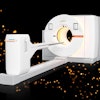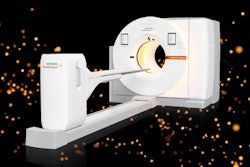Pretreatment bone marrow disorders may predict which patients are at risk for severe adverse reactions (SARs) when treated with lutetium-177 (Lu-177) DOTATATE, according to an article published July 11 in the Journal of Nuclear Medicine.
In a retrospective analysis of treated patients, a group at Johns Hopkins University in Baltimore, MD, found that many who ultimately developed SARs had preexisting bone marrow disorders that were exacerbated by treatment.
“Further study is needed to determine whether the risks of SARs outweigh the benefit in these patients,” noted lead author Andrew Voter, MD, and colleagues.
Lu-177 DOTATATE (Lutathera, Novartis) is an effective second-line treatment for metastatic or nonresectable neuroendocrine tumors. The treatment can result in hematologic severe adverse reactions (SARs) and preemptive identification of patients at risk of SARs could mitigate this risk and improve treatment safety and outcomes, the authors wrote.
To that end, the researchers collected demographic and oncologic history, pretreatment laboratory values, and SAR frequency for 126 sequential patients treated with Lu-177 DOTATATE. Of these, 14 (11%) had SARs.
 A visual abstract of the study. Image courtesy of the Journal of Nuclear Medicine.
A visual abstract of the study. Image courtesy of the Journal of Nuclear Medicine.
According to the analysis, age, prior chemotherapy, and baseline hematologic parameters including hemoglobin, platelet count, leukocyte count, and mean corpuscular volume (MCV) – a – a measurement of the volume or size of an individual’s red blood cells – correlated significantly with SARs.
Specifically, a univariable logistic regression analysis showed that patients with an MCV greater than 95 femtoliters (fL) had an odds ratio of 16 for SARs, the authors noted.
Half the patients who developed SARs did so during treatment, although without a definite temporal pattern, they wrote. Also, the patients with SARs fared poorly, with death occurring in seven and persistent myelosuppression in four at one year after treatment.
“Pretreatment complete blood counts are routinely collected on patients undergoing treatment with Lu-177 DOTATATE; an MCV of 95 fL or higher is, therefore, a convenient screening parameter to identify patients at risk of SARs,” Voter and colleagues suggested.
The authors noted limitations, namely that this was a retrospective, single-center study in patients who likely had more advanced disease than comparator cohorts. Also, the number of patients who had SARs was relatively small, they wrote.
Nonetheless, with other radionuclide therapies such as radium-223 (Ra-223) dichloride (Xofigo) and Lu-177 PSMA-617 (Pluvicto) for prostate cancer entering routine clinical use, developing strategies for screening patients who might benefit from pretreatment analysis is crucial, the authors noted.
“Further study is needed to determine whether these findings are applicable beyond Lu-177 DOTATATE,” the researchers concluded.
Access to the full article is available here.




















